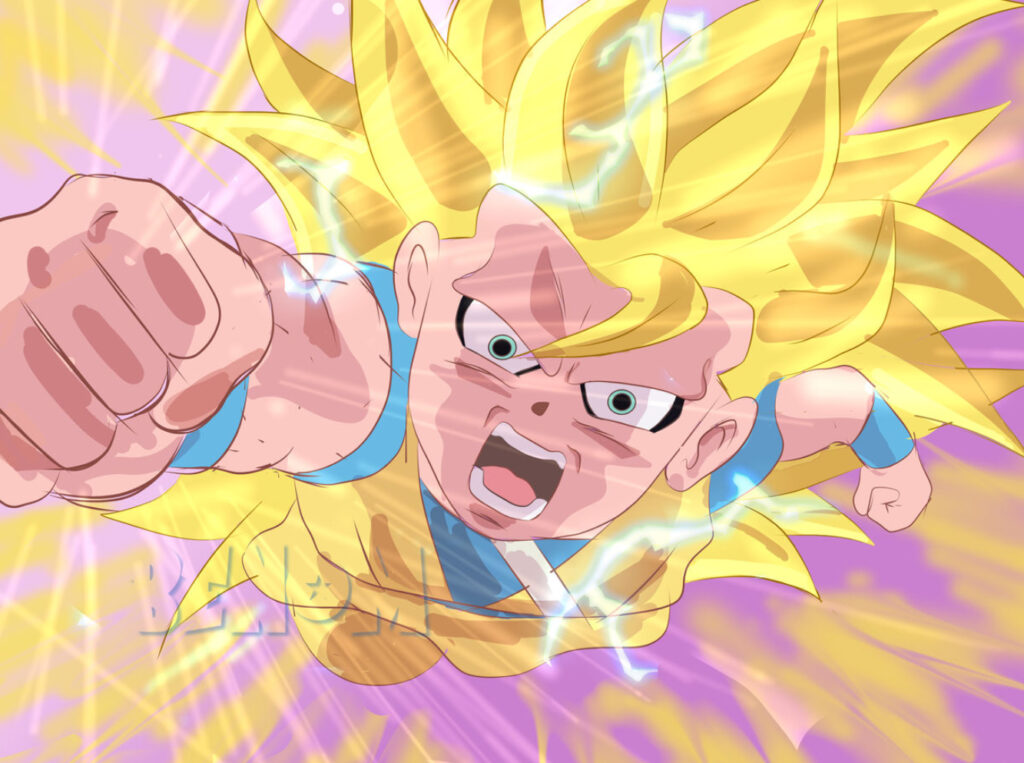Since its inception in the 1980s, the Dragon Ball franchise has solidified its place as one of the most influential and celebrated series in anime and manga history. Following the immense success of Dragon Ball Z, the franchise expanded with sequels, spin-offs, movies, and related media. Each continuation built upon its predecessor, introducing new characters, worlds, and concepts while redefining its legacy. This exploration focuses on the chronological timeline of Dragon Ball Z sequels, the trends they set in the anime industry, and their social impressions.
Chronological Timeline of Dragon Ball Z Sequels and Continuations
Dragon Ball Z (1989–1996)
•Dragon Ball Z established the core of the franchise with iconic arcs such as the Saiyan Saga, Frieza Saga, Cell Saga, and Majin Buu Saga.
•Its emphasis on high-stakes battles, power-ups, and intergalactic conflicts became the blueprint for many shonen anime.
•The show’s end left room for new explorations, setting the stage for future sequels.
Dragon Ball GT (1996–1997)
•Chronologically, Dragon Ball GT takes place after the events of Dragon Ball Z. The series focuses on Goku’s transformation into a child and his quest across the galaxy.
•Though it introduced memorable elements like Super Saiyan 4 and the Shadow Dragons, its lack of direct involvement from Akira Toriyama led to mixed reviews.
•Despite initial backlash, Dragon Ball GT gained a cult following and remains a significant part of the franchise.
Dragon Ball Z Kai (2009–2015)
•This remastered version of Dragon Ball Z condensed the series, removing filler episodes to align more closely with the original manga.
•Released during the rise of digital streaming, Kai reintroduced the series to a new generation while reigniting nostalgia for long-time fans.
Dragon Ball Super (2015–2018)
•Filling the gap between the end of the Majin Buu Saga and the finale of Dragon Ball Z, Super reinvigorated the franchise with Akira Toriyama’s active involvement.
•New sagas, such as the Universe 6 Tournament and the Tournament of Power, expanded the multiverse concept.
•Iconic transformations like Super Saiyan God and Ultra Instinct elevated the stakes, and characters like Beerus and Jiren became fan favorites.
Dragon Ball Super: Broly (2018)
•This film reintroduced Broly, canonizing his backstory and incorporating him into the Super timeline.
•The movie’s success highlighted the franchise’s ability to blend nostalgia with fresh storytelling.
Dragon Ball Super: Super Hero (2022)
•Shifting focus to Gohan and Piccolo, this movie revitalized underutilized characters while introducing new forms like Orange Piccolo and Gohan Beast.
•It marked the franchise’s first extensive use of 3D animation.
Dragon Ball Heroes (2018–Present)
•This promotional anime introduced alternate timelines and non-canon battles, appealing to die-hard fans of the Dragon Ball Heroes arcade game.
•Though not part of the main timeline, it explored fan-service-driven narratives, such as Super Saiyan 4 versus Super Saiyan Blue.
Dragon Ball Daima (2024)
•Celebrating the franchise’s 40th anniversary, Dragon Ball Daima returns to its roots with an adventurous story reminiscent of the original Dragon Ball.
•By transforming Goku and his companions into children, it explores the Demon Realm and introduces new characters like Glorio, blending lightheartedness with action.
•Dragon Ball Z pioneered the concept of escalating power levels and dramatic transformations. Each sequel built on this, introducing forms like Super Saiyan God, Ultra Instinct, and Gohan Beast.
•The trend influenced countless shonen series, including Naruto and Bleach.
Multiverse Exploration
•Starting with Dragon Ball Super, the series expanded its universe to include multiple timelines and universes. This multiverse concept has inspired similar approaches in modern franchises, including Marvel and DC.
Reviving Legacy Characters
•Films like Dragon Ball Super: Broly and Super Hero successfully reintroduced legacy characters with updated storylines, catering to both nostalgic fans and new audiences.
Fan Service
•Non-canon spin-offs like Dragon Ball Heroes thrive on fan service, showcasing battles and transformations that might not fit into the main storyline but satisfy fan expectations.
Animation Innovations
•From traditional 2D animation in Dragon Ball Z to hybrid 3D in Super Hero, the franchise has consistently evolved its visual style.
Global Cultural Phenomenon
•Dragon Ball became a symbol of childhood for millions worldwide. Phrases like “It’s over 9000!” have entered mainstream lexicon, and characters like Goku are recognized globally.
•The series has inspired fan art, cosplay, merchandise, and even professional athletes who cite it as a motivational source.
Cross-Generational Appeal
•With sequels like Dragon Ball Z Kai and Dragon Ball Super, the franchise bridges generational gaps. Parents who grew up watching Dragon Ball Z now share it with their children.
Criticism and Redemption
•Dragon Ball GT faced criticism for its narrative and character designs, but its unique elements, like Super Saiyan 4, eventually earned it respect.
•Dragon Ball Super was initially criticized for inconsistent animation but later redeemed itself with improved quality and engaging storylines.
Representation and Inclusion
•The series has faced scrutiny over the years for its lack of diversity and the treatment of female characters. However, newer entries, such as Dragon Ball Super: Super Hero, have given more prominence to characters like Pan and Videl.
Nostalgia and Innovation
•Nostalgia remains a driving force behind the franchise’s success. Movies like Broly and series like Daima revisit familiar elements while introducing fresh twists.
Fan-Driven Longevity
•The franchise’s longevity can largely be attributed to its dedicated fanbase. Fan projects, from fan art to unofficial continuations like Dragon Ball Multiverse, keep the spirit of Dragon Ball alive.
The Future of Dragon Ball
With the release of Dragon Ball Daima, the franchise is poised to continue its legacy for years to come. By blending the adventurous tone of the original series with modern storytelling techniques, it aims to appeal to both old and new fans. Additionally, the franchise’s willingness to experiment with new formats, such as video games and promotional anime, ensures its relevance in a rapidly changing entertainment landscape.
Impression
The Dragon Ball Z sequels and continuations represent an evolving franchise that has consistently pushed boundaries while honoring its roots. From Dragon Ball GT’s bold departure to Dragon Ball Super’s multiverse expansion and Daima’s nostalgic return, each chapter contributes to the rich tapestry of the Dragon Ball universe. As it continues to inspire and entertain audiences worldwide, Dragon Ball stands as a testament to the enduring power of compelling storytelling and unforgettable characters.
No comments yet.







